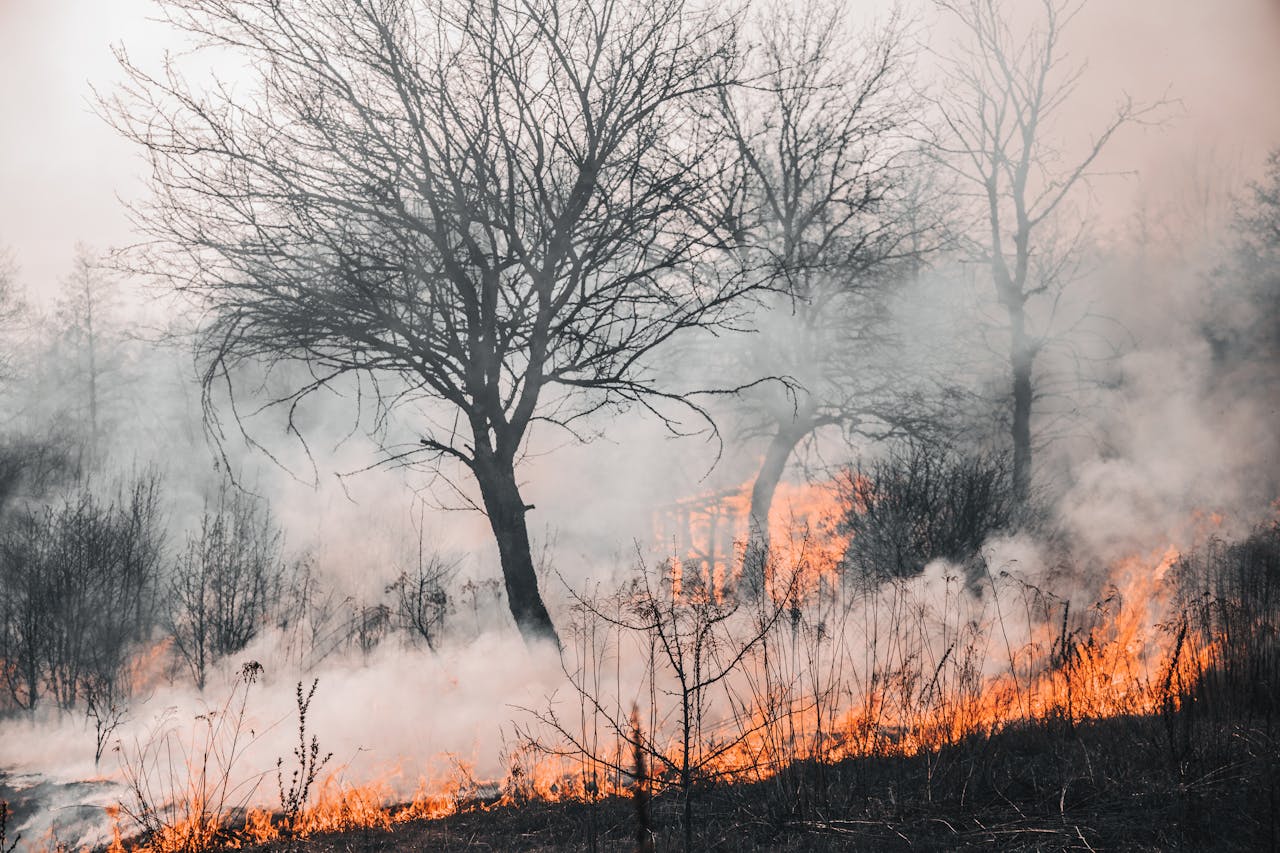In 2022, the United Nations released a report concluding that climate change would ‘intensify a global wildlife crisis.’ Unfortunately, you don’t have to live close to a wildfire to be affected by one. Over the past two weeks, several wildfires have ravaged Los Angeles, in California, killing at least 25 people and forcing thousands to flee their homes.
While firefighters do their best to control the flames, the smoke from these blazes has created a health crisis of its own by impacting the air quality. The Los Angeles Department of Public Health stated, “smoke impact from the Palisades Wildfire burning has caused unhealthy air quality in Los Angeles County.”
Wildfires Are Burning Up LA’s Air
With the raging wildfires in the Los Angeles area being breaking news, I’ve chosen to delve into the health risks that come with the blazes. That said, this article will touch on;
- The state of air quality in LA
- The link between wildfires and air pollution
- The dangers of air pollution
- How to protect the air you breathe as wildfires rage on
Is The Air in LA Dangerous?
Air quality has always been an integral part to our longevity, particularly because air pollution has been linked to a number of health conditions, ranging from lung infections to dementia.
Wildfire smoke contains tiny particles (PM2.5) that, when inhaled, can travel deep into our lungs and blood, raising the risk for many health concerns. As stated by May Lin Wilgus, a doctor and researcher at UCLA, to NPR,
“The exposure to the fine particulate matter, the air pollution, is similar to smoking a quarter to half a pack a day.”
The grave dangers of wildfire smoke are due to how it’s not just the small particles that you’re inhaling,
“If you’re close to the fire, you’ll be exposed to carbon monoxide, which poisons your red blood cells and interferes with oxygen uptake, [as well as] nitrogen dioxide, which dissolves in the airway lining fluid to generate a powerful acid that hurts small airways,” explained Dr. Brian Christman, a volunteer spokesperson for the American Lung Association, to AccuWeather.
Wildfire smoke has been linked to over 600,00 annual premature deaths globally and between 5,200 and 8,500 hospital admissions annually. This can be traced back to an increased risk for a range of, unsurprisingly, respiratory conditions like asthma and infectious bronchitis, but also stroke, heart attack, and heart failure.
Who is most at risk?
Granted, anyone can experience the effects of wildfire smoke and poor air quality, but certain people do face a higher risk.
These groups include children, the elderly, smokers, pregnant people, and those with existing cardiovascular or respiratory conditions. While they are saving lives, first responders and firefighters can also be considered an at-risk group, as one 2019 study found that wildland firefighters’ repeated exposure to smoke increased their risk for lung cancer and cardiovascular disease.
Are you breathing bad air?
If you’re being exposed to wildfire smoke, it’s quite easy to identify the effects that it may be having on your body. These symptoms include:
- Changes in voice
- Burning in the mouth and throat
- Eye irritation
- Runny nose
- Headache
- Coughing
- Difficulty breathing
- Shortness of breath
- Chest pain
- An asthma attack
- Rapid heartbeat
Exposure to air pollution triggers oxidative stress and inflammation in the body. Here’s what a medical doctor suggests you do.
While social media is flooded with celebrities documenting their evacuations from their Hollywood mansions, not everyone has the resources to flee their neighborhoods. If so, there are ways to protect yourself and limit your exposure to wildfire smoke. Start by wearing a face mask if you are in an area heavily affected by air pollution.
Dr. Mark Hyman says that exposure to air pollution triggers oxidative stress and inflammation in the body.
“It is important to support your natural detox pathways to minimize harm and protect your health.”
He recommends the following actions:
Hydration
Water supports toxin elimination and keeps airways moist, improving respiratory health.
Use a HEPA Air Purifier
Devices like AirDoctor reduce indoor pollution by filtering out the fine particular matter (PM 2.5).
Sweat
Exercise or infrared sauna sessions enhance the excretion of pollutants through sweat.
Deep Breathing Exercises
Improve your oxygen exchange, reduce stress and support lung health.
Saline nasal rinses
Clear pollutants from your nasal passages and reduce irritation.
Eat healthy foods
- Eat broccoli, kale, Brussels sprouts that contain sulforaphane a powerful compound that activates detoxification enzymes in the liver.
- Eat anti-oxidant rich foods like berries and colored veggies.
- Foods like free-range organic eggs and grass-fed beef will provide cysteine and glycine, essential for producing glutathione, your body’s master antioxidant.
- Ensure you are getting enough B vitamins to protect your brain and heart.
Effects of pollution on your body
Dr. Hyman explains that pollution’s impact goes beyond the lungs. “It affects your entire body. Prioritize anti-oxidant rich foods, proper hydration and strategies that optimize detox pathways.”
He adds, “Small, consistent steps can protect your health even in challenging environments. Take care of your body – it’s your best defense.”




![women [longevity live]](https://longevitylive.com/wp-content/uploads/2020/01/photo-of-women-walking-down-the-street-1116984-100x100.jpg)










